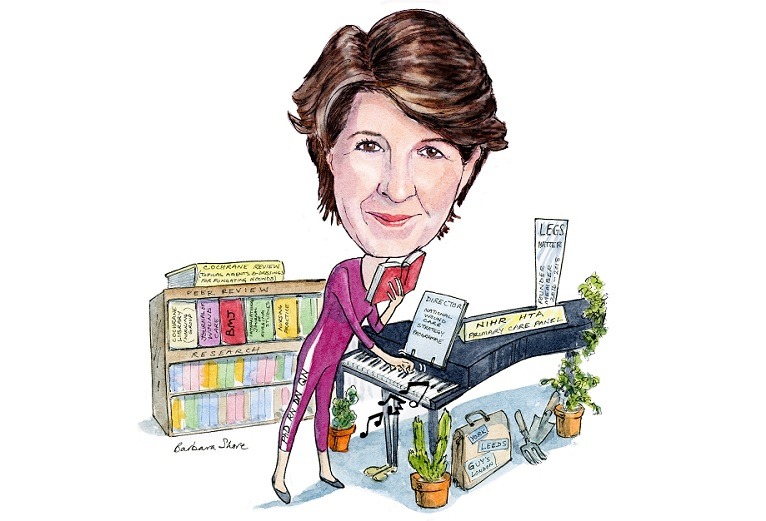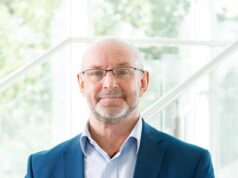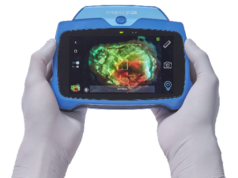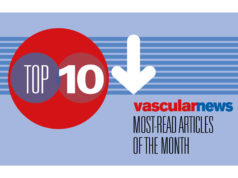
As director of the National Wound Care Strategy, a programme that aims to improve the quality of wound care across the UK, Una Adderley is one of several figures in the nursing community leading the drive for change. Speaking to iWounds News, Adderley explains how she entered the field of tissue viability, the ways in which it has changed throughout her career, and why it must evolve over the next few years, emphasising that “there are still so many people not receiving care in line with the research evidence”.
Why did you decide to pursue a career in nursing and how did you arrive at the specialty of tissue viability?
I think, to begin with, that it was an act of rebellion. I was supposed to go to university, but I decided against it at the time, which is ironic given how I have spent much of my working life. Instead, I chose to become a nurse, as I wanted to do something practical. Eventually, leaving nursing for a few years, I realised that community nursing was probably better suited to my talents, and I became interested in tissue viability. During my first week in the community, I visited a patient who had terrible leg ulcers. I had never seen anything like it, so I decided that I had to find out more about what this condition was, and how to provide care.
Who were some of your key mentors when you first entered the tissue viability field and how did they guide your journey?
Initially, I managed to go on one of the early leg ulcer courses run by Christine Moffatt but soon after I started working as a lecturer practitioner at the University of York, and met Nicky Cullum and Andrea Nelson, who were researching leg ulceration. I ended up working alongside them on the VENUS trials for 10–15 years. I learned a huge amount during this period about research and clinical practice, and this experience has been hugely instrumental in how I view wound care.
During your time as a tissue viability nurse, how have practices developed and transformed?
Unfortunately, not as much as I would have hoped, given that the evidence has been there for a long time. People are still not putting it into practice. It is interesting though that conference programmes are becoming more evidence-based, which I fully welcome. I know that there are many gaps in the research evidence, but when it exists, we should be using it as the starting point to inform care. I find it staggering that there are still so many people not receiving care in line with the research evidence.
To what extent can technology play a role in advancing the practice of wound care, for both physicians and nurses?
I think this is going to be of key importance. You can look at technology in terms of gadgets for treating wounds, but I do not think that this is where the real benefit is going to come; what will be truly interesting is the development of digital applications for capturing information about the patient and measuring wounds electronically. I think that this technology can also provide more access to information for patients and carers, so this could be a really exciting area to keep an eye on.
As a lecturer in community nursing, how important is the role of education in improving practice?
Education is, of course, very important and I think technology will be very interesting here, as we can offer nurses the opportunity of high-quality, online education. The reality though is that the work we do is difficult and practical, so you cannot teach everything online. I am concerned that people do not have access to the education they need. Technology can play a role in increasing access to education, but I think there is a danger in assuming that education is the only answer. It is certainly part of the solution, but there are already clinicians out there who know what they should be doing, but cannot because services are not organised in a way that allows them to deliver appropriate care.
What role can societies, such as Legs Matter and the Tissue Viability Society, play in raising awareness of wounds and their impact?
I see these bodies as being absolutely essential in raising awareness about the impact of hard-to-heal wounds such as leg ulcers and pressure ulcers. I was involved in the development of Legs Matter, which came about because we recognised that we needed to spread the word about what good care looked like. It is only when you realise the extent of how awful it is to be living with some of these conditions that things might change. Our hope is that if we can help patients and carers to have a voice, this will hopefully influence decision-makers at the top.
In terms of the key issues and complaints faced by the nursing community, which wounds are currently presenting the most challenges?
The biggest issue today would certainly be lower leg ulceration, which accounts for the largest group of patients suffering from wounds. However, I would have to guess that the highest number of complaints relate to patients with pressure ulcers, especially as the public is now more aware that pressure ulcers should not be happening. In the past, it was accepted that this is what occurs when you become old and frail, but today, people are beginning to understand that these wounds are nearly always preventable.
Can you explain some of the key aims and initiatives of the National Wound Care Strategy and how this will benefit patients?
There are three key clinical areas: lower limb wounds, pressure ulcers and surgical wounds. In terms of the latest developments, we have some recommendations for the lower limb that have been sent out for consultation, and we are planning to start working with pathfinder sites in early 2020. We need to test what is the best way of implementing the recommended changes; we all know that just publishing new guidance does not lead to improvement. We need to examine how best to change practice. There also needs to be a focus on data and information, including ideas about smart ways of capturing information in a consistent, standardised way. We have plans to make some online, free-to-access educational modules available so that wherever you work, you can access good quality education. Finally, there is work that needs to be done around the classification of wound care products, and we are trying to come up with a system that will be clear and acceptable for everybody.
During your career as a nurse, what have been some of the most memorable or challenging cases you have encountered?
When you work as a tissue viability nurse you see some shocking sights but sometimes the most memorable cases are those where small successes are achieved: finding a form of compression that is acceptable to someone who would not previously use compression but now no longer has recurrent leg ulcers, or sorting out a case of wound malodour so a grandmother is no longer too embarrassed to spend time with her grandchildren; such successes are immensely rewarding.
Is there a moment in your career that you are particularly proud of, either as a nurse or an educator?
At my graduation ceremony when I was lining up waiting to receive my doctorate, we started talking about the different colours of our gowns. The newly-qualified nurses in front of me were blown away that a clinical nurse was being awarded a PhD. It felt good that I was hopefully inspiring the next generation.
What are some of your hobbies and interests away from wound care?
I can usually be found with my nose in a book, or some other kind of reading material, or taking some form of exercise in an attempt to slow down the ravages of middle age. I also enjoy walking, playing the piano (badly) and the usual stuff like time with my family and friends. In some ways, I go from one extreme to the other: incredibly busy at work, and possibly a bit lazy outside of it.
Factfile:
Qualifications
- 1989 BA, University of York, York, UK
- 1996 BSc, Leeds Metropolitan University, Leeds, UK
- 2005 MSc, University of York
- 2012 PGCE, Teesside University, Middlesbrough, UK
- 2013 PhD, University of York
Academic appointments (selected)
- 1999–2002 Research nurse, University of York
- 2010–2012 Senior lecturer on research methods, School of Health and Social Care, Teesside University
- 2012 Fellow, The Higher Education Academy, Heslington, UK
- 2012–2018 Lecturer in community nursing, School of Healthcare, University of Leeds
Professional appointments (selected)
- 2003–2008 Tissue viability specialist nurse, North Yorkshire and York Primary Care Trust, York, UK
- 2008–2010 Team leader, specialist nurses, North Yorkshire & York Community and Mental Health Services, York, UK
Offices (selected)
- 2002–2006 NICE (National Institute for Health and Care Excellence) Guideline Development Group, surgical site infection (SSI)
- 2007–2009 Chair, North East Tissue Viability Nurses
- 2016–2018 Founder member, Legs Matter
- 2017–Present Panel member, National Institute for Health Research (NIHR) Health Technology Assessment (HTA) Primary Care Panel
- 2018–Present Director, National Wound Care Strategy programme













